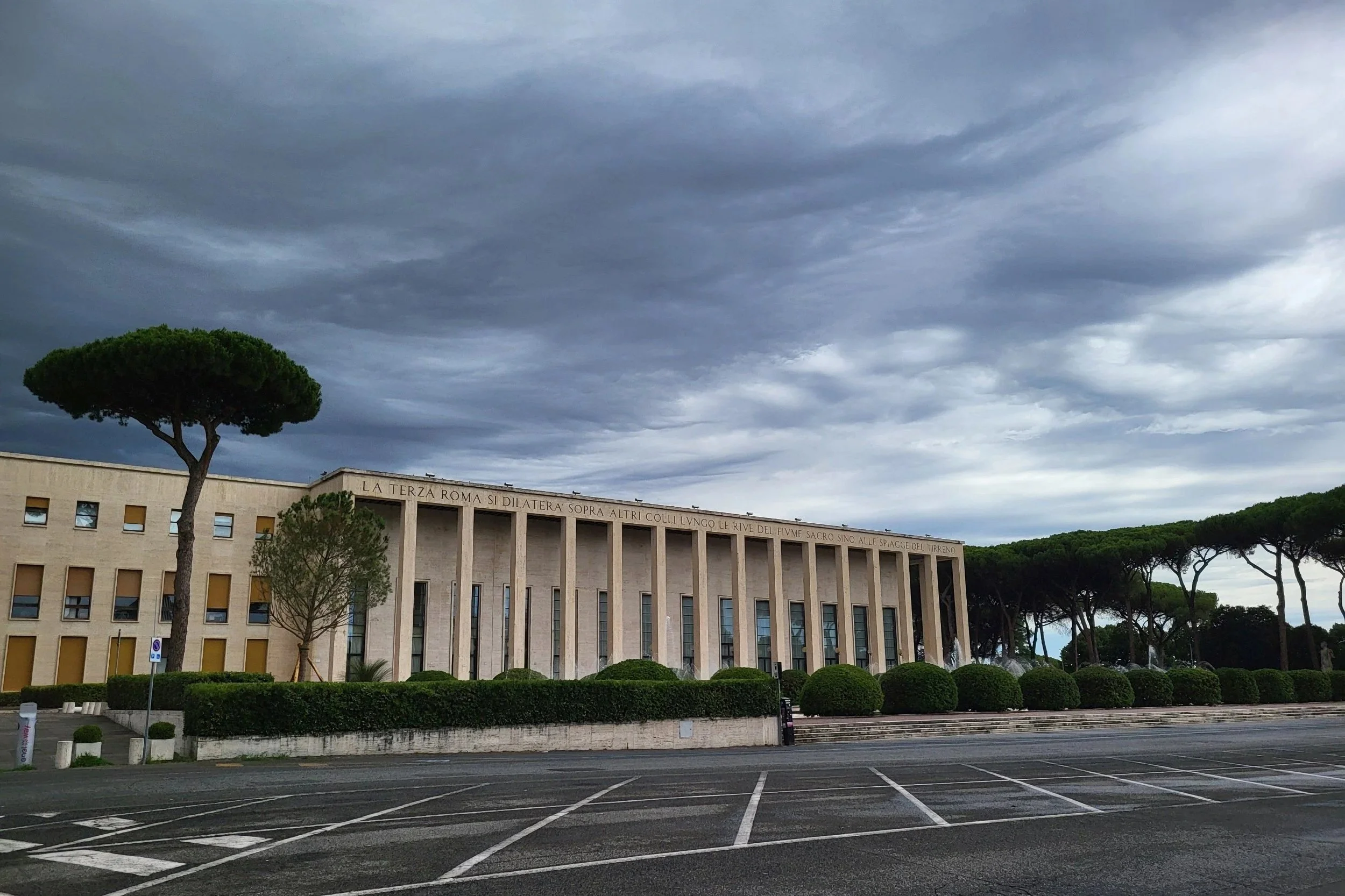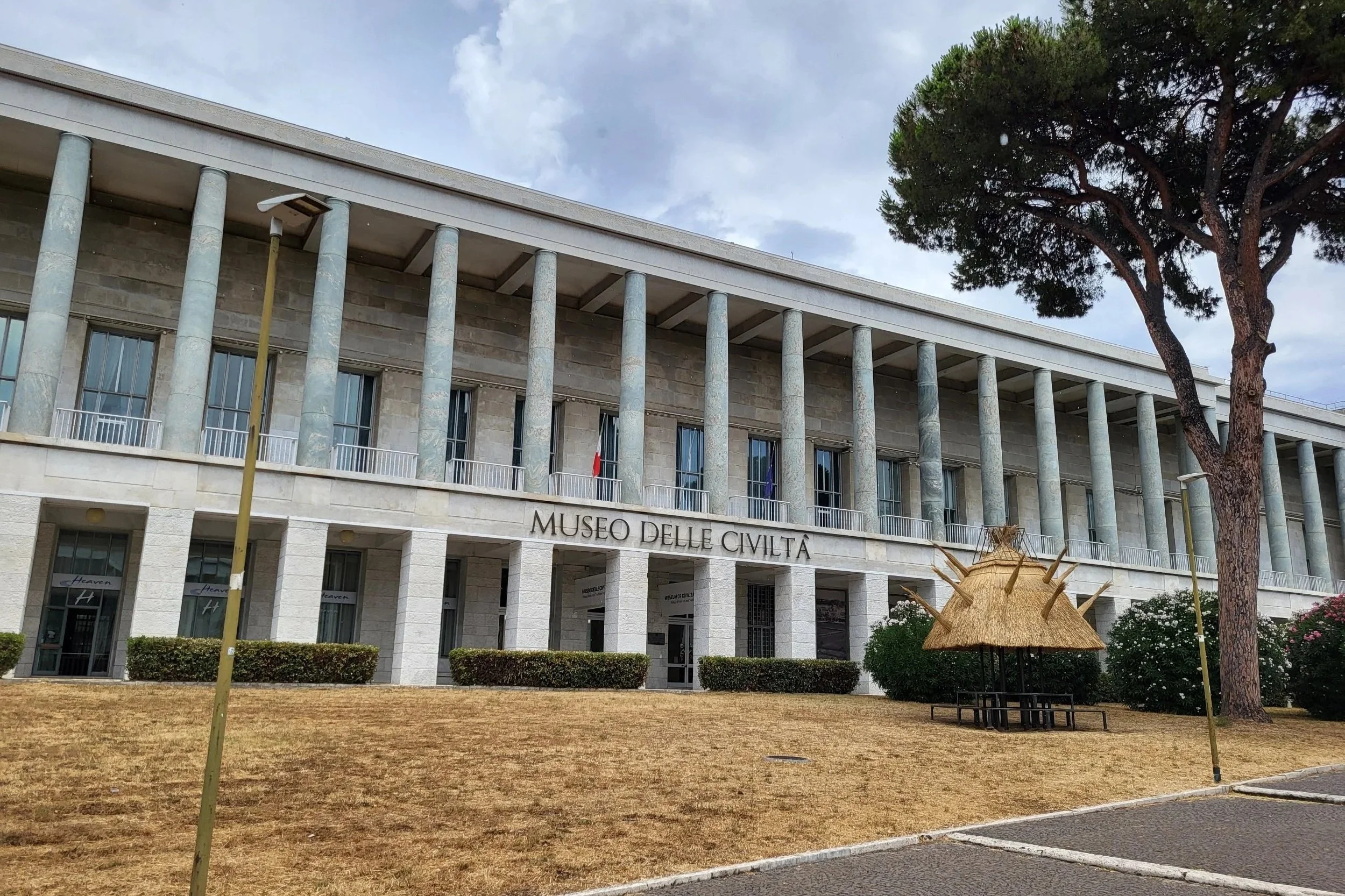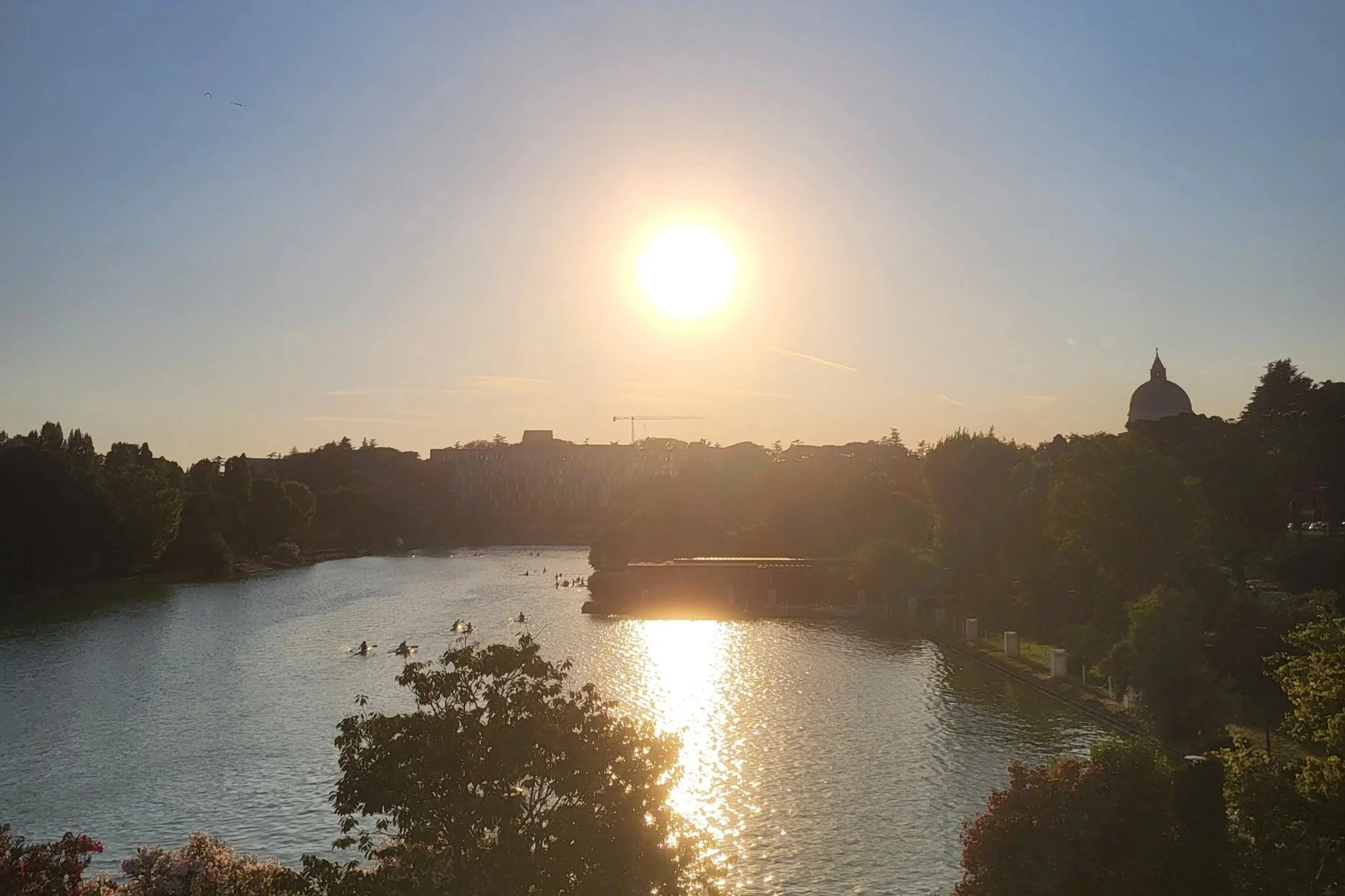What to See in the EUR District in Rome: History, Architecture & Surprises
As I have mentioned on my blog before, one of my favourite things about Rome is that every neighbourhood in the city can feel totally different. In my neighbourhood series, I have previously talked about Pigneto, Ostiense, Testaccio, and Monti, and this time I want to focus on the EUR district. Located a little further away from the centre, it is a fascinating place with a dystopian feel to it. To be completely honest, the first time I visited, I kind of got the creeps, but over time I really grew to appreciate it. In this blog post, I will share a bit about the history of the district, the highlights you can’t miss when visiting EUR, and how to get to the area using public transport.
A Brief History of the EUR District
If you think about Rome, the EUR district is probably not what comes to mind. While the city centre has small, cosy streets, EUR is built in the style of rationalist architecture, mixing classical elements with modernism. The streets are much broader, and the enormous fascist-era buildings give the whole area a bit of a dystopian feel (hence why it originally gave me the creeps).
These days EUR is a residential neighbourhood and also one of the main business areas of Rome, but originally the district was created in the 1930s to host the 1942 World’s Fair, which Benito Mussolini planned to open to celebrate twenty years of Fascism. The name EUR comes from Esposizione Universale Roma ("Rome Universal Exposition"). Because of the Second World War, the exhibition never took place, and the district later took on a new role as a business area outside the centre.
What to See in the EUR District in Rome
The EUR district is quite large, but luckily all the main landmarks are within walking distance of each other. You can easily spend just an hour or so exploring, or take your time, visit some museums, and make a whole day of it. With restaurants, bars, and even a park in the area, it’s easy to plan a really nice day in EUR.
Palazzo della Civiltà Italiana (The "Square Colosseum")
The main eye-catcher and landmark you simply have to see when visiting EUR is the Palazzo della Civiltà Italiana (The Palace of Italian Civilization), better known as the “Squared Colosseum.” It is the symbol of the district, and its construction began in 1938 as part of the plans for the 1942 World’s Fair. The building was only completed after the Second World War and is now considered one of the most important examples of fascist architecture. While I initially expected to find some sort of museum inside, I was surprised to learn that it actually houses the headquarters of the fashion house Fendi. Visiting the Squared Colosseum is always impressive, and I love how it seems to change throughout the day depending on the light.
Basilica of St Peter and St.Paul
Located on the highest point of the EUR district, you will find the Basilica of Saints Peter and Paul. It was built around the middle of the twentieth century and has one of the most impressive hemispherical domes in Rome, with a diameter of 32 meters.
Last time I visited, I wasn’t really dressed accordingly, so I didn’t go inside, but the altars house some beautiful mosaics, so it is definitely worth a visit. The way up to the basilica is a stairway, and from the top you get a lovely view over the EUR district.
EUR’s Museums
If you already know me a little, it will be no surprise that I like to visit a museum from time to time. The EUR district has some beautiful ones, such as the Museum of Civilizations, which actually has multiple locations. The first is the Palace of Sciences (Piazza G. Marconi 14), which houses prehistoric, paleontological, African, American, Asian, Oceanian, Early Medieval, colonial, and contemporary arts and culture collections. The second is the Palace of Folk Arts and Traditions (Piazza G. Marconi 8), which is home to the collections of Italian folk arts and traditions.
In another building of the Museum of Civilizations, you can find the Planetarium. With a 14-metre dome and 98 seats, it is one of the largest planetariums in Italy. Its 300 m² hemispherical screen makes for a really cool experience, and with an almost 100-year history dating back to 1928, it is actually the oldest planetarium in the world outside Germany.
EUR Park (Laghetto dell’EUR)
Probably my favourite place in the EUR district is its lake and the surrounding park. This artificial lake was originally part of the plan for the 1942 exhibition, but today it is the perfect spot to wind down and relax. I often see people here having a picnic or reading a book, and on the water you will find people kayaking or enjoying other water sports.
Between mid-March and early April, you can have an extra special walk here, because around that time the Sakura, cherry trees donated by the city of Tokyo, come into bloom. It is such a beautiful sight and truly a magical experience.
How to Get to the EUR District in Rome
Last but definitely not least, how do you get to the EUR district when you are in Rome? If you are travelling by public transport, you can simply take Metro line B (the blue one). EUR has several stops on this line: EUR Magliana, EUR Palasport, and EUR Fermi. Personally, I always get off at EUR Palasport because it is the closest to the park, but any of these stops will work as everything in the district is within walking distance.
If you are not yet familiar with public transport in Rome, you can check out my beginner’s guide to make navigating the city a lot easier!
Conclusion
I hope this blog post inspires you to visit the EUR district in Rome. While I was not its biggest fan at first, it really grew on me, and its history is fascinating. There is plenty to see and do here, but often I simply bring a book and spend some time reading in the park. If you are in Rome for a longer stay, I definitely recommend visiting this area, it is truly a part of the city you will not find anywhere else.










